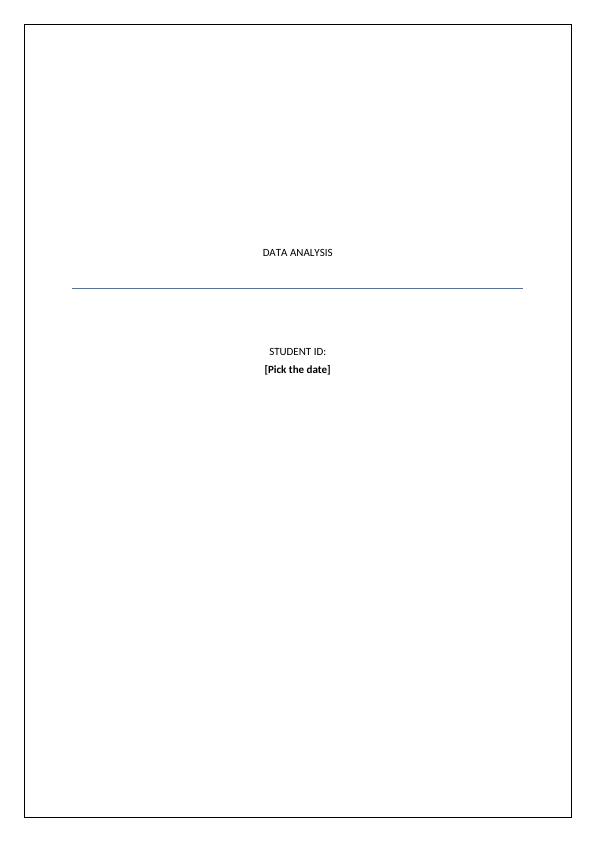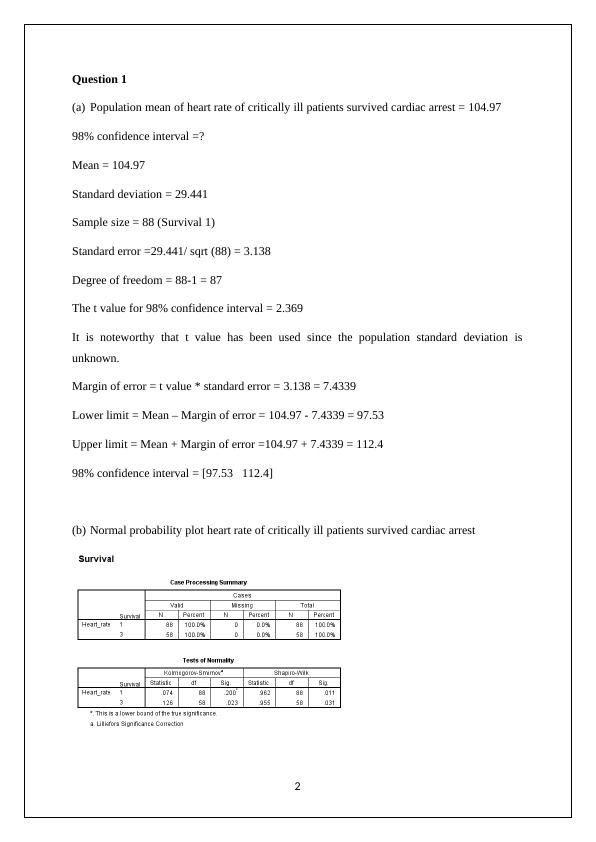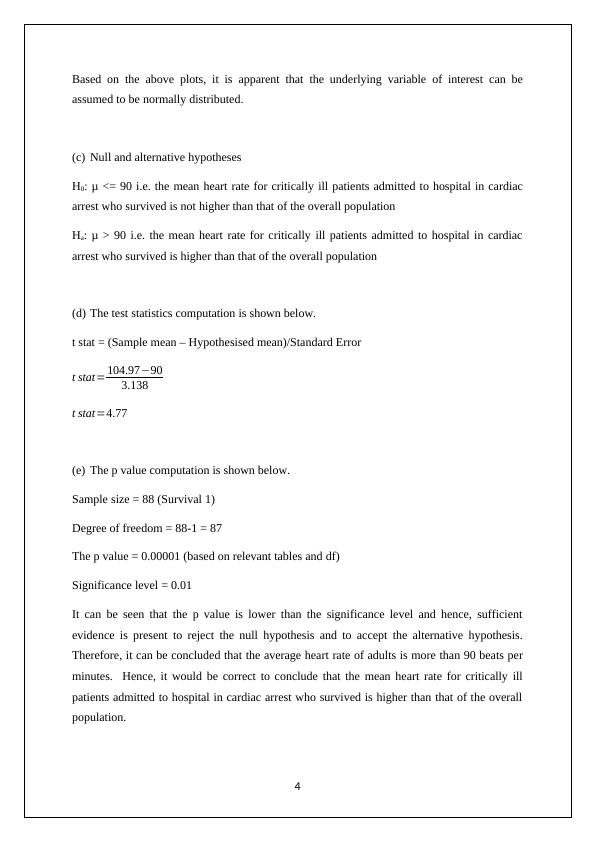Data Analysis
This assignment is for the Data Analysis course (STA2300) at the University of Southern Queensland. It is Assignment 3 and is due on 28 May, 2019. The assignment requires answering questions related to material up to and including Module 10.
16 Pages1914 Words22 Views
Added on 2023-03-23
About This Document
This document provides a detailed analysis of various statistical tests and hypothesis testing. It covers topics such as confidence intervals, normal probability plots, test statistics, p-values, and SPSS output. The document also includes examples and explanations for each test. Suitable for students studying statistics or data analysis.
Data Analysis
This assignment is for the Data Analysis course (STA2300) at the University of Southern Queensland. It is Assignment 3 and is due on 28 May, 2019. The assignment requires answering questions related to material up to and including Module 10.
Added on 2023-03-23
ShareRelated Documents
End of preview
Want to access all the pages? Upload your documents or become a member.
Comparison of Tar Yield in Side Stream and Main Stream Smokers
|19
|3282
|90
(PDF) Money and Banking : Assignment
|16
|2370
|45
Comparative Analysis of Exam Scores using Boxplots, Histograms, F-test, Confidence Interval and Hypothesis Test
|8
|785
|125




